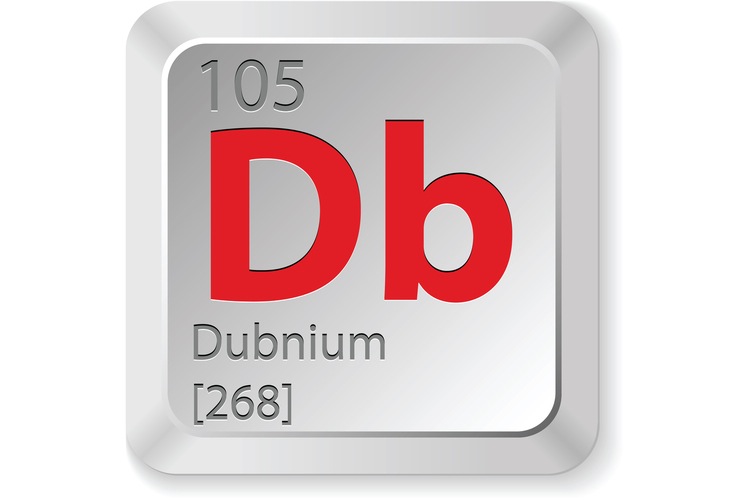Facts About Dubnium

Atomic Number: 105 Atomic Symbol: Db Atomic Weight: (268) Melting Point: Unknown Boiling Point: Unknown
Word Origin: Dubnium is named for Dubna, Russia, home of the Joint Institute for Nuclear Research, where the element was first reported. Some American scientists at the University of California, Berkeley have tried to get the element to be called “hahnium” for the German scientist Otto Hahn. Though the International Union of Pure and Applied Chemistry (IUPAC) endorsed the name dubnium, some scientists still refer to the element as “hahnium.”
Discovery: In 1967, scientists in Dubna reported the existence of element 105. Their reports were based on finding atoms of some dubnium isotopes using time-coincidence measurements of alpha energies. In late April 1970, they confirmed their findings by synthesizing the element. Around the same time, scientists at the University of California, Berkeley, reported that they too had synthesized element 105. There were also some reports that they had synthesized it in 1969, and others that the Russians’ methods of producing the element could not be duplicated with the same results. Credit for the discovery is still controversial.
Properties of dubnium
Dubnium is a synthetic element about which little is known. It is presumed to be a solid metal. [See Periodic Table of the Elements]
Dubnium has seven recognized isotopes. The most stable is 268Db, which has a half-life of about 32 hours. It decays through spontaneous fission.
For naturally occurring elements, the atomic weight is calculated from averaging the weights of the natural abundances of the isotopes of that element. However, for manmade transuranium elements, there is no "natural" abundance. The IUPAC convention is to list the atomic weight of the longest-lived isotope in the periodic table. These atomic weights should be considered provisional since a new isotope with a longer half-life could be produced in the future.
Sources of dubnium
Dubnium is produced artificially and only small amounts have been made. Various isotopes can be made by bombardment with the Heavy Ion Linear Accelerator.
Uses of dubnium
Only small amounts of dubnium have ever been produced and its isotopes have very short half-lives. For this reason, its only use is within scientific research.
(Sources: Los Alamos National Laboratory, Jefferson Lab)
Sign up for the Live Science daily newsletter now
Get the world’s most fascinating discoveries delivered straight to your inbox.











